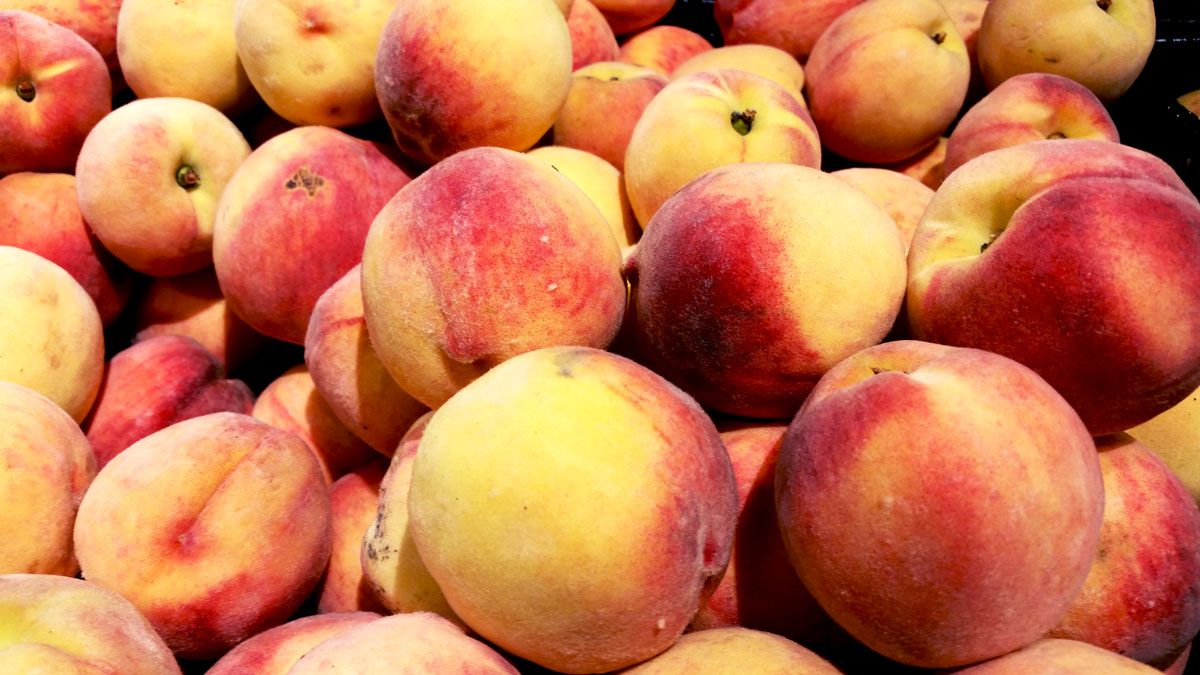
Blue Fruit Farm
This year we began working directly with Blue Fruit Farm (Winona, Minn.) to bring us a selection of berries and fruits unavailable elsewhere on the market. Earlier this season, they brought us black currants and, in the next few weeks, we will be receiving a few deliveries of aronia berries and elderberries.
Native to North America, the aronia berry (chokeberry) is the most recent antioxidant rich superberry to create a stir. Higher in polyphenolic compounds and anthocyanin than blueberries or cranberries, the aronia berry has become one of the highest ranked foods for its health benefits.
Aronia berries may be eaten raw, but cooking tempers the tartness of the berry and softens its often tough skin. Substitute aronia berries for any recipe that calls for blueberries or currants.
To make aronia berry jam, place a pound of aronia berries in a saucepan, cover with water and the juice of one lemon. Cook on medium to low heat for 20–30 minutes or until they soften. Chop up a large tart apple (try any of Hoch Orchards’ summer apples) with the skin on. Place in a separate saucepan with a little water until it cooks down. Strain out the solids through a sieve and set aside. A little at a time, add ¾ cup of sugar and stir until it is fully incorporated before adding the apple pulp (apple provides the pectin that aronia berries lack). Bring the mixture to a boil until thickened (about 15 minutes). Store in a jar and refrigerate.
Elderberries are another native North American berry. Raw elderberries are quite astringent and contain a small amount of a poisonous alkaloid. Cooking transforms the taste and destroys the harmful alkaloid. Elderberries are high in vitamins A, B, and C and are a powerful immune booster.
Blue Fruit elderberries will be sold on the stem. To remove the berries from the stem, freeze them and the berries will easily separate from the stem.
Elderberries make delicious jams and sauces. Boiled down with ginger, cloves, and cinnamon and fortified with honey, an elderberry syrup is a natural remedy for the cold and flu.

Summer Squash
About this time of year, summer squash is a production powerhouse. Each week we bring in hundreds of pounds of green zucchini, yellow squash, zephyr squash, and patty pan squash from Wisconsin Growers Cooperative (Mondovi, Wis.) and even more green zucchini from Featherstone Farm (Rushford, Minn.).
For tender, delicately flavored summer squash, select firm, unblemished, and smaller fruits (under 6 inches in length). Store unwashed in a plastic bag in the crisper for up to four days, and wash before use. Most of the nutritional value is in the skin, so avoid peeling.
Summer squash is commonly a supporting flavor and texture added to sauces (think ratatouille) or sweet quick breads or muffins. When prepared well, however, summer squash can shine as the main ingredient both cooked and raw.
For a quick poached summer squash, slice two small patty pan squash thinly and place in tin foil with a tablespoon of butter, a splash of dry white wine, a clove of crushed garlic, a few sprigs of thyme, and a generous sprinkle of salt and pepper. Close the foil and place on a grill or in the oven for 10–15 minutes or until the package is fragrant and the squash is tender but not soft.
On hot days when I am loath to either heat up the kitchen or eat warm food, I have also been enjoying a marinated zucchini salad using a mixture of small green zucchini and yellow (or zephyr) squash. Using a peeler, create thin slices of the squash, salt layer by layer, and set aside for 15–20 minutes. In the meantime, mix three tablespoons olive oil, three tablespoons lemon juice, and a clove or two of crushed garlic. Rinse the zucchini and drain excess moisture. Add the dressing and allow to marinate for a few hours. Just before serving, toss with a mixture of chopped chives, basil, mint, and parsley; add salt and crushed red pepper to taste.
Local Peaches
This year has been an outstanding year for stone fruit all around. We have now received a few deliveries of peaches grown by Jim and Crystal Barnard on orchards in Wisconsin and Michigan, and the quality and flavor are excellent. In addition to yellow peaches, Jim has brought small amounts of donut peaches. These smaller, flat peaches tend to have thinner, less fuzzy skin with a sweeter flesh, sometimes with almond notes.
For those looking for cases for preserving, these will be available for a limited time. We are offering a case deal, but unlike other years with abundant seconds (blemished fruit), these will mostly be first-quality peaches due to the health of this year’s crop.